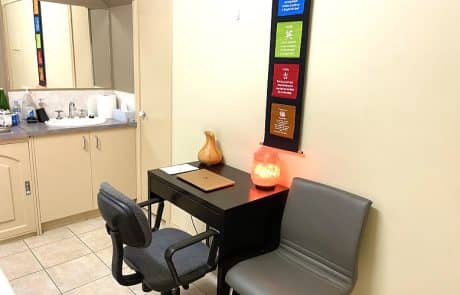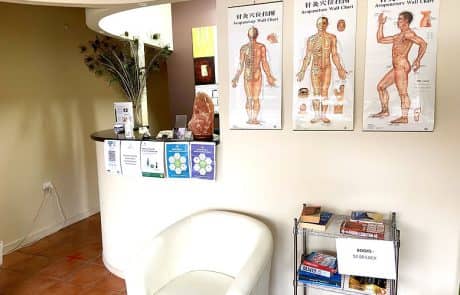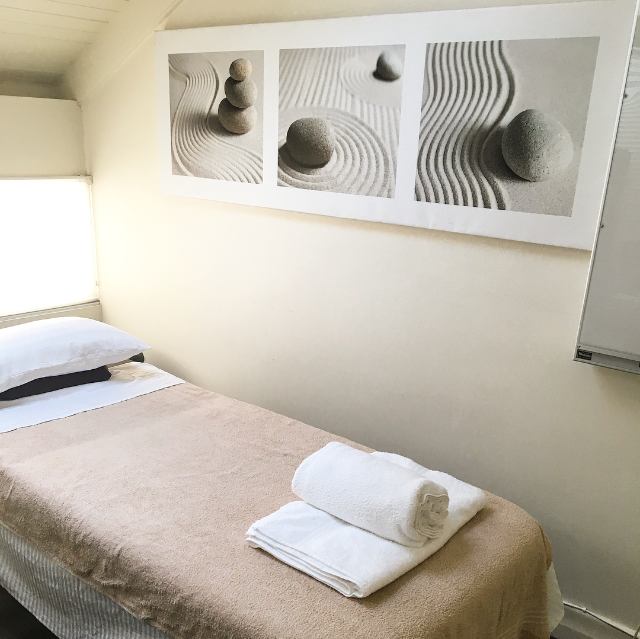Endometriosis: The Hidden Pain in a Woman’s Body
Endometriosis is a common gynaecological condition that primarily affects women of reproductive age. It is defined as the presence of endometrial tissue (including glands and stroma) outside the uterine cavity. The most common locations for ectopic endometrial tissue include the ovaries, fallopian tubes, pelvic peritoneum, and uterosacral ligaments. In rare cases, endometrial tissue can also be found in distant organs such as the intestines, bladder, and lungs. These ectopic endometrial tissues undergo cyclic changes in response to menstrual hormones, leading to inflammation, pain, and the formation of adhesions.
Causes and Pathogenesis
The exact cause of endometriosis is not fully understood, but several theories have been proposed to explain its pathogenesis:
1. Retrograde Menstruation Theory (Implantation Theory)
-
Concept:
This theory suggests that during menstruation, some of the menstrual blood flows backward through the fallopian tubes into the pelvic cavity. The endometrial cells in this blood then implant and grow outside the uterus, forming ectopic lesions.
-
Support:
Retrograde menstruation is believed to occur in most women, but only a subset develop endometriosis, indicating that other factors are also involved.
2. Coelomic Metaplasia Theory
-
Concept:
This theory proposes that peritoneal or other coelomic epithelial cells transform into endometrial-like cells in response to certain stimuli, leading to the formation of ectopic lesions.
-
Support:
This theory helps explain cases where endometriosis occurs in locations not easily explained by retrograde menstruation, such as in males or in women without a history of menstruation.
3. Immune Dysfunction Theory
-
Concept:
According to this theory, immune system dysfunction allows the survival and growth of ectopic endometrial cells in the pelvic cavity.
-
Support:
Evidence of immune system abnormalities in many endometriosis patients supports this theory.
4. Genetic Theory
-
Concept:
Endometriosis may have a genetic predisposition, as women with a family history of the condition are at higher risk of developing it.
-
Support:
Epidemiological studies show a higher incidence of endometriosis among first-degree relatives.
5. Lymphatic or Hematogenous Spread Theory
-
Concept:
This theory suggests that endometrial cells spread to distant organs via the lymphatic or circulatory systems.
-
Support:
This theory explains cases of endometriosis found in distant organs like the lungs.
Clinical Symptoms
The symptoms of endometriosis vary widely, and their severity differs from one person to another. Common symptoms include:
-
Dysmenorrhea:
Severe abdominal pain during menstruation, which may worsen over time.
-
Chronic Pelvic Pain:
Persistent or intermittent abdominal and lower back pain, not limited to the menstrual period.
-
Dyspareunia (Deep Pain During Intercourse):
Pain experienced during or after deep penetration during intercourse.
-
Infertility:
Endometriosis is a common cause of infertility, leading to difficulty in conceiving.
-
Menstrual Irregularities:
Heavy menstrual bleeding, prolonged periods, or irregular bleeding.
-
Bowel or Bladder Dysfunction:
Pain during bowel movements, constipation, or blood in the urine, especially if endometriosis involves the intestines or bladder.
-
Fatigue and General Malaise:
Some patients may experience fatigue and general feelings of being unwell.
Diagnosis
Diagnosis of endometriosis is typically based on clinical symptoms, physical examination, and imaging studies, with definitive diagnosis requiring surgery and histological confirmation.
-
Medical History and Physical Examination
- Gathering detailed information on symptoms, menstrual history, and reproductive history; pelvic examination may reveal tenderness, masses, or adhesions.
-
Imaging Studies
- Ultrasound: Useful for detecting ovarian endometriomas (chocolate cysts).
- Magnetic Resonance Imaging (MRI): Provides a more precise assessment of the extent and depth of the lesions, especially in deep infiltrating endometriosis.
- Computed Tomography (CT): May be used in complex cases for further evaluation.
-
Blood Tests
- CA-125 Tumor Marker: Elevated in some patients, but its sensitivity and specificity are limited, so it cannot be used alone for diagnosis.
-
Laparoscopy
- Gold Standard: Minimally invasive surgery allows direct visualization of the pelvic cavity, identification, and biopsy of suspected lesions for definitive diagnosis.
- Advantages: Simultaneous treatment, such as removal or ablation of lesions and adhesions, can be performed.
From Chinese Medicine Points of View
For the treatment of endometriosis, we combine acupuncture and herbal medicine, focusing on regulating qi and blood, unblocking meridians, and resolving blood stasis and masses to alleviate symptoms and improve overall health.
-
Qi Stagnation and Blood Stasis Type:
This is characterised by severe lower abdominal pain before or during menstruation, with fixed pain, and dark purple menstrual blood with clots. The treatment focuses on promoting blood circulation, relieving stagnation, and alleviating pain.
-
Cold Coagulation and Blood Stasis Type:
This is characterised by cold pain in the lower abdomen during menstruation, which is relieved by warmth, and dark menstrual blood with clots. The treatment focuses on warming the meridians, dispersing cold, and promoting blood circulation.
-
Damp-Heat and Blood Stasis Type:
This is characterised by burning pain in the lower abdomen during menstruation, with yellowish and excessive vaginal discharge, accompanied by abdominal bloating and a bitter taste in the mouth. The treatment focuses on clearing heat, eliminating dampness, and relieving pain.
-
Liver and Kidney Deficiency Type:
This is characterised by soreness and weakness in the lower back and legs, scanty menstruation with pale colour, accompanied by frequent urination at night or fatigue. The treatment focuses on nourishing the liver and kidneys, and replenishing qi and blood.
Herbal Medicine
Basic Formulas:
-
Xue Fu Zhu Yu Tang (Blood Mansion Eliminating Stasis Decoction):
Used for Qi stagnation and blood stasis type. Herbs like Angelica sinensis, Chuanxiong, Red Peony Root, Peach Kernel, and Safflower are commonly included.
-
Wen Jing Tang (Warm the Menses Decoction):
Used for cold coagulation and blood stasis type. Herbs like Evodia, Cinnamon Twig, Angelica sinensis, and Chuanxiong are typically used.
-
Qing Re Li Shi Tang (Clear Heat and Eliminate Dampness Decoction):
Used for damp-heat and blood stasis type. Herbs like Scutellaria, Phellodendron, Plantago, and Moutan Bark are commonly included.
-
Liu Wei Di Huang Wan (Six-Ingredient Pill with Rehmannia) Plus Modifications:
Used for liver and kidney deficiency type. Herbs like Rehmannia, Yam, Cornus, Moutan Bark, Alisma, and Poria are included.
Herb Modifications: Depending on specific symptoms, herbs like Motherwort, Cattail Pollen, and Trogopterus Dung can be added to promote blood circulation and remove stasis, or Artemisia and Evodia can be added to warm the meridians and disperse cold.
Acupuncture Treatment
Point Selection Principles: Unblock meridians and harmonize qi and blood.
Main Acupuncture Points:
- CV4 (Guanyuan) and CV6 (Qihai): Warm and tonify yang, regulate the qi movement in the lower abdomen.
- CV3 (Zhongji): Regulate the uterus and unblock meridians.
- SP6 (Sanyinjiao) and LI4 (Hegu): Harmonize qi and blood, relieve pain.
- ST36 (Zusanli): Strengthen the spleen, boost qi, and enhance overall health.
Lifestyle Adjustments
-
Dietary Adjustments:
Increase intake of fiber-rich and antioxidant-rich foods, and reduce high-fat and high-sugar diets.
-
Moderate Exercise:
Helps alleviate pain and improve mood.
-
Psychological Support:
Counselling and support groups can help alleviate anxiety and depression.
Prognosis and Complications
-
Prognosis:
Endometriosis is a chronic condition with a high recurrence rate, requiring long-term management and follow-up.
-
Complications
-
Infertility:
Due to pelvic adhesions and inflammation, affecting fertility.
-
Chronic Pain:
Persistent pain affects the quality of life.
-
Ovarian Cyst Rupture or Torsion:
May lead to acute abdomen, requiring emergency treatment.
-
Endometriosis is a complex disease that requires a comprehensive and individualised treatment approach. Early diagnosis and appropriate management can effectively alleviate symptoms, improve the quality of life, and enhance fertility.
Note: The above information is for reference only. Specific diagnosis and treatment should be carried out by a professional gynaecologist or Chinese Medicine practitioners based on the patient’s specific situation. If you have related symptoms or questions, it is recommended to consult a healthcare provider for professional advice.


















Leave A Comment